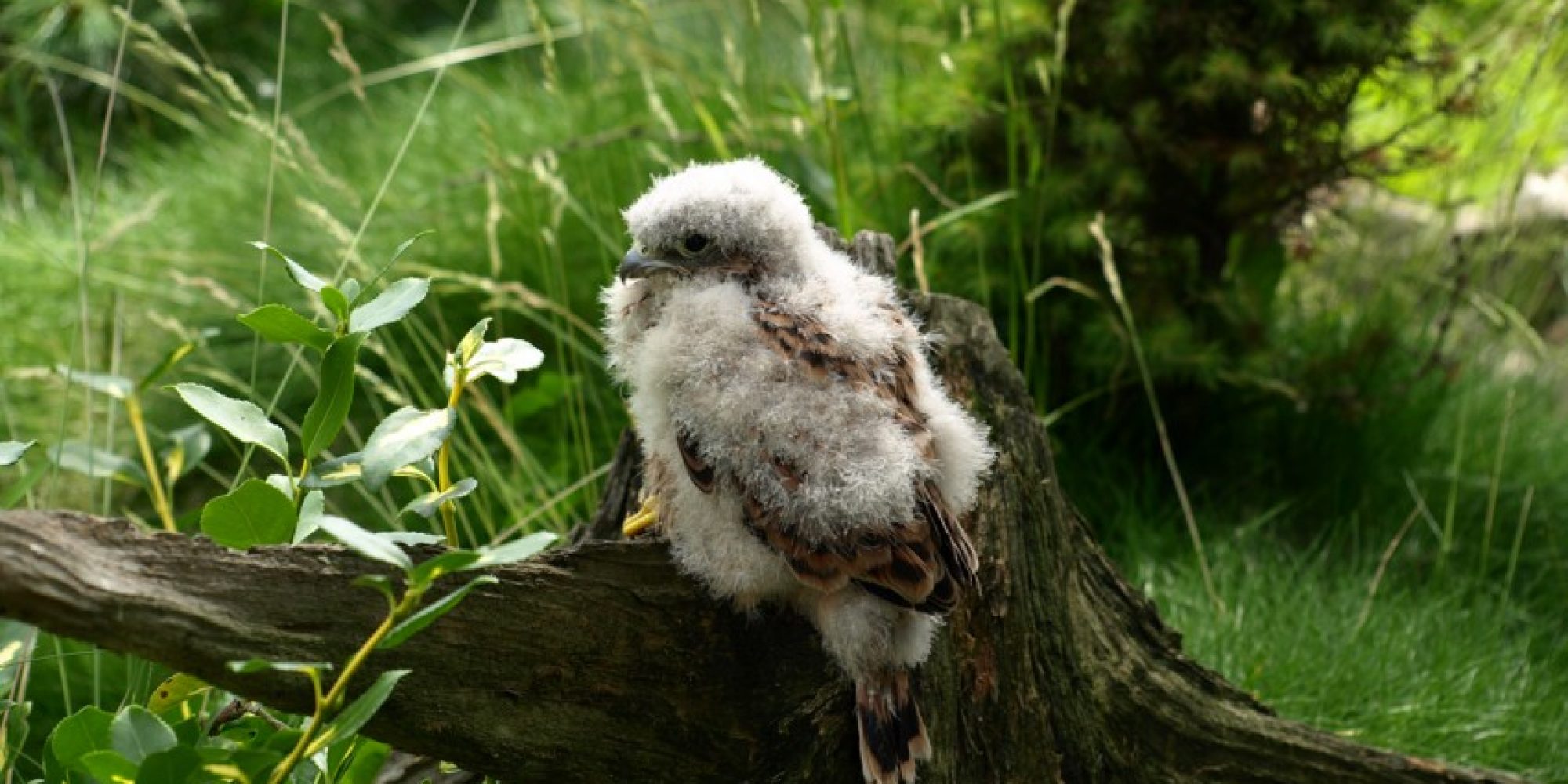Dazzling weather; check. Ravishing plumage; check. Find mate; check. Time to breed! Birds bursting into song just before dawn are calling to the world that spring has awakened and that breeding season is in full swing. It won’t be long before nests fill with fluffy chicks and their cute calls.
It’s very possible that in the coming months we may find chicks that look abandoned and helpless. But what should we do if we see a baby bird out of its nest and on the ground? It is hard to resist the urge to rescue, but often people intervene when in fact most chicks should be left alone. The Spring Alive project is raising awareness on this issue with children and adults throughout Europe, Central Asia and Africa, with this season’s theme of “Don’t take chicks with you”.
Alone, helpless, small, cold, clumsy and fluffy… We see a flightless chick on the ground in our garden and many of us go weak at the knees. How did it get here? Where are its parents? Is it orphaned? Has it fallen from a nest? Is it injured? It is cheeping, maybe it is calling for help? We are struck by an overpowering urge: “I must rescue it… I must do something…”
Stop. Think. Is interfering the best thing to do in this situation? While small actions can, and do, make a big difference in conservation, sometimes our eagerness to step in can be detrimental – especially when our judgment is clouded by the “cute factor”. We may have the best of intentions, but taking a chick with you can be a bad thing; it is technically illegal, it is messing with nature, and can even make things worse for the chick.
So what should you do?

First you must identify whether the chick is visibly injured. It might be clumsy, or even unable to walk if it is very young, but that is perfectly natural. In very rare cases, it could be bleeding or could have other visible trauma, in which case the best thing to do is call the experts: the responsible government authority, the Game and Fauna Service, has a Rehabilitation Centre for wild birds (+357 22 867 786) and BirdLife Cyprus is always available to give advice (+357 22 455 072).
Know the difference between a “hatchling”, “nestling” and a “fledgling”. If the bird is uninjured, then it may well be a fledgling, meaning it has naturally left the nest (fledged) and has short adult-like feathers but is still being fed by its parents. It might be sitting on the ground or hopping about, but can’t quite fly. However, its parents are probably nearby, collecting food or keeping a watchful eye where you cannot see them. Removing a fledgling from the wild reduces its chances of survival so it may be best to back away… Your presence might even be stopping the parents from feeding the chick. If the fledgling is in a dangerous place however, like in a road or about to be pounced on by a pet cat, as a last resort you can move the chick a few metres out of harm’s way, but so it is still in hearing distance of parents. Keep cats in the house until fledglings are flying.
If the bird is a hatchling (eyes not yet open) ornestling (eyes open, some downy feathers and/or tube-like sheaths), and it is healthy (sometimes parents deliberately eject chicks that are ill or dying so they can concentrate on feeding the remaining chicks) then, if you can see an obvious nest that it came from, you should put it back carefully without disturbing the nest. If not, or if the nest has fallen, you should construct a makeshift nest by hanging a small porous basket filled with dry grass in a tree and placing the chick in there. The parents should then return to care for it. If they don’t return within two hours, or you cannot quickly construct a makeshift nest, you should contact BirdLife Cyprus for advice.
A swift response
Things are different for one migratory species however. The Common Swift Apus apus needs a high platform from which to take off, so if you see this species on the ground it might not be injured – it may just be stranded. So in this case the best thing to do is pick it up and simply let it fly off from a high platform, away from power lines or other obstacles and not too close to busy roads, but be careful not to throw it in the air. If it doesn’t fly on its own, contact BirdLife Cyprus to help you assess the situation. Barn Swallow Hirundo rustica chicks also fly straight from the nest, so they should never be left on the ground.
In most cases however, people misidentify a fledgling as a nestling in need of support, or will take away a nestling when they could be placed in their original nets, or a makeshift one. It’s such a common mistake that the Spring Alive teams across Eurasia and Africa will be spreading these messages to teachers, pupils, children and parents, as well as continuing to teach about bird migration and conservation.
We know it is difficult, but you can see that in most cases it is important that you must resist those cute calls. If you are in doubt, the best thing you can do is seek the help of someone who knows and will help you assess the situation.




